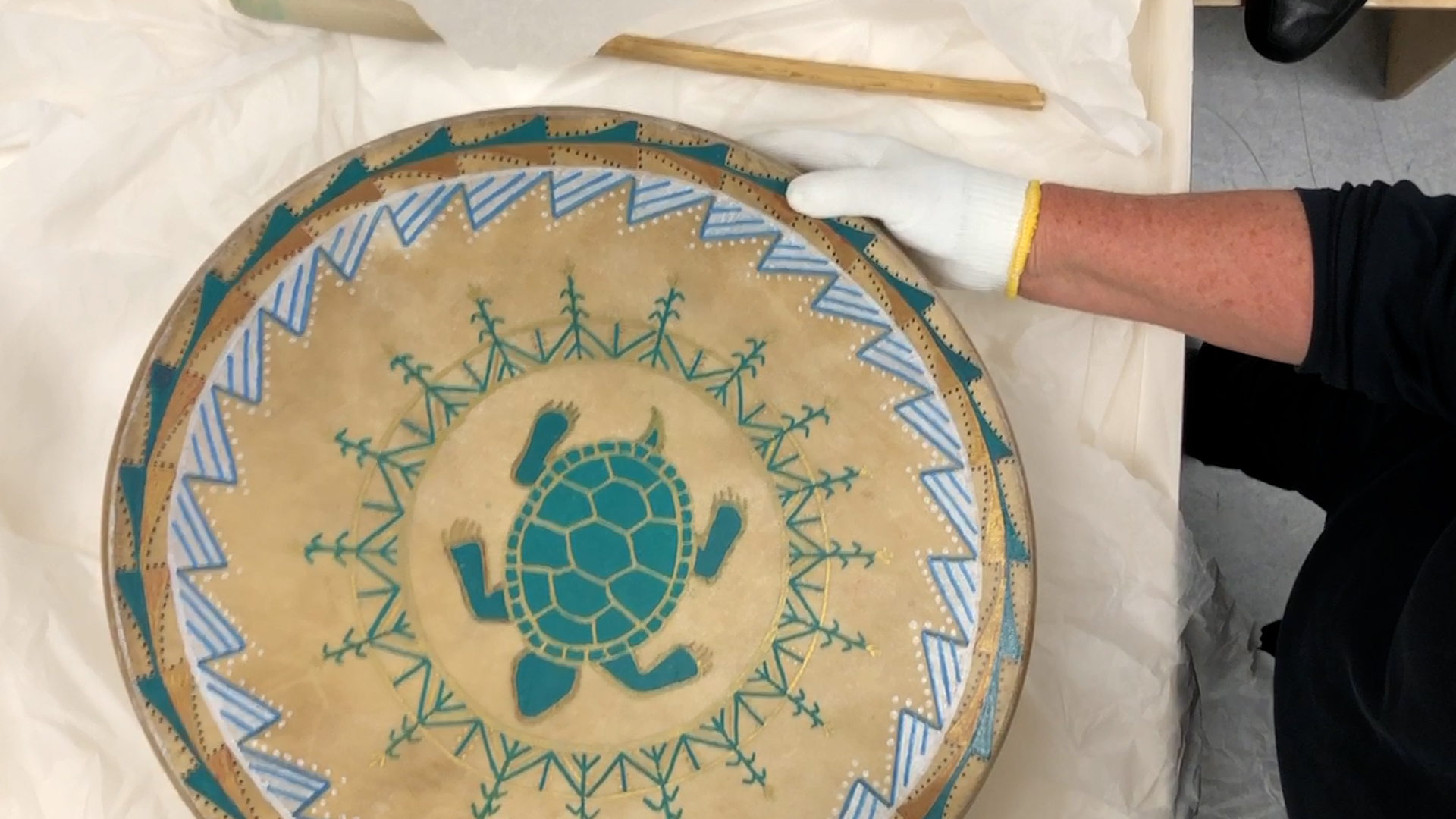Indigenous Perspectives seeks to place the voices and experiences of Virginia’s tribal communities at the center of an active examination of the Library of Virginia’s holdings. This exhibition is an ongoing partnership between the Library of Virginia and Virginia’s eleven state and federally recognized tribes to incorporate tribal perspectives on our collections and to acknowledge and recognize that Virginia’s Indigenous communities have been, and remain, a vital part of Virginia’s history and culture.
This exhibition and initiative by the Library of Virginia began with a conversation that Barbara Batson, exhibition coordinator, had with David Bearinger, formerly of Virginia Humanities. During their conversation, David Bearinger asked if the Library had ever done programming or an exhibition focusing on the Commonwealth of Virginia’s eleven state and federally recognized tribes. Following their conversation, Barbara Batson met with the exhibition team, which included Catherine Fitzgerald Wyatt, Gregg Kimball, and myself (Ashley R. Craig), to discuss how an upcoming exhibition could honor the lives and accomplishments of Virginia’s tribal communities.
”Indigenous peoples pass on their history through oral tradition, so there are no written records. So, if we can take a European record and analyze it from a different perspective, we can make sense of our story. And we can adjust [it] to give it our perspective.
Chief Lynette AllstonNottoway Indian Tribe of Virginia
After the initial internal conversation, I was tasked with reviewing the Library’s 130 million items to discover records pertaining to Virginia’s Indigenous people. The research began in the typical collections, like the executive papers of Virginia governors, historic newspapers, county and city records, and census records. However, once diving into this task, I realized that Virginia’s Indigenous people could be found in almost every collection from the colonial period to modern day.
Once the exhibition team rediscovered the voices and actions of native people, the next step was to meet with Virginia’s tribes. On May 22 and 23, 2022, the Library of Virginia hosted Chiefs, Assistant Chiefs, and tribal representatives from the Cheroenhaka (Nottoway) Tribe of Southampton County, Pamunkey Indian Tribe, Chickahominy Indian Tribe, the Nottoway Indian Tribe of Virginia, Patawomeck Indian Tribe, Mattaponi Indian Tribe, and Upper Mattaponi Indian Tribe. From these two stakeholder meetings, the exhibition team was even more determined to make this exhibition a success. For the next year, the exhibition team met with nine of the eleven state and federally recognized tribes at their reservations, museums, or tribal centers to learn more about their unique histories in Virginia and how each tribe would like their history portrayed in the exhibition. For example, Chief Frank Adams of the Upper Mattaponi Indian Tribe, gave the exhibition team a tour of the Sharon Indian School, located in King William County, which educated tribal citizens of the Upper Mattaponi Tribe and any surrounding tribal citizens. This tour sparked an interest in illuminating the history of the Sharon and Samaria Indian Schools as well as the process that Indigenous students had to go through to gain an education in segregated Virginia.
For Indigenous Perspectives, the Library engaged in a series of recorded conversations with the tribes to gain their perspectives on the Library’s collections. Tribal reflections centered on how the tribes have reinterpreted these materials and issues of importance to them. Drawing from these conversations, the exhibition’s themes subsequently focus on sovereignty, land and environment, identity, culture and community, and the future. In addition to snippets from the recorded conversations, the exhibition includes documents from the Library’s collection and items on loan from Virginia’s tribes. Indigenous Perspectives opens to the public at the Library of Virginia on Tuesday, December 5, 2023, and continues through Saturday, August 17, 2024.
”I think the reason why there’s such a such a big what’s the word, like jump in revitalization of like youth identity of being Native is because we realize what our ancestors went through, we kind of recognize the fact that like, they struggled so hard for us to be here, we need to kind of like, I don’t want to say pick up the job for them. But we want to be able to do what they were not able to, which is why I’m so like big on going to school. And like I’m encouraging like my cousin, I was just talking about to go to school and to like to get into these programs and like do what you need to do, let people know that like we never went anywhere, we’re still going to be here for as long as this earth is a thing. We’re always going to be Chickahominy Indians.
Sarah JeffersonCitizen of the Chickahominy Indian Tribe
”Well now we’re having cultural classes for the elders. We’re having cultural classes for the adults. Then we have summer program for the kids to where they come in, we all doing different things from beading, pottery and leather, just different projects, different things. This past summer, the kids helped out in making and working in making a net. So, we have a net that handmade by the Eastern Chickahominy children that will go in the museum.
Tanya StewartCitizen of the Chickahominy Indian Tribe













